Key Points:
- Some animals have developed the ability to survive in the harshest conditions. The wood frog is able to keep itself alive in extreme cold and the collared peccary’s extra-strength digestive system can break down tough plants, like cacti.
- Other animals have adapted to be able to disguise themselves from predators, like color-changing cuttlefish and the sneaky leaf-tailed gecko.
- Animal adaptations can sometimes take the form of remarkable abilities. Meerkats have special eye markings that allow them to see in the sun and horned lizards face off with predators by shooting blood from their eyes!
Which animals have the craziest adaptations? There are many adaptations animals make that seem crazy to us. The climate where the creatures live, predators that prey on some of them, and how they reproduce are essential considerations. Whether an adaptation is considered unusual may be in the eye of the beholder.
Adaptations are special features of an animal’s body or behavior that help it survive in specific environments or circumstances. These habits and specialized body parts are like super powers! They can help an animal hide, defend itself, find food, or endure all kinds of harsh conditions.
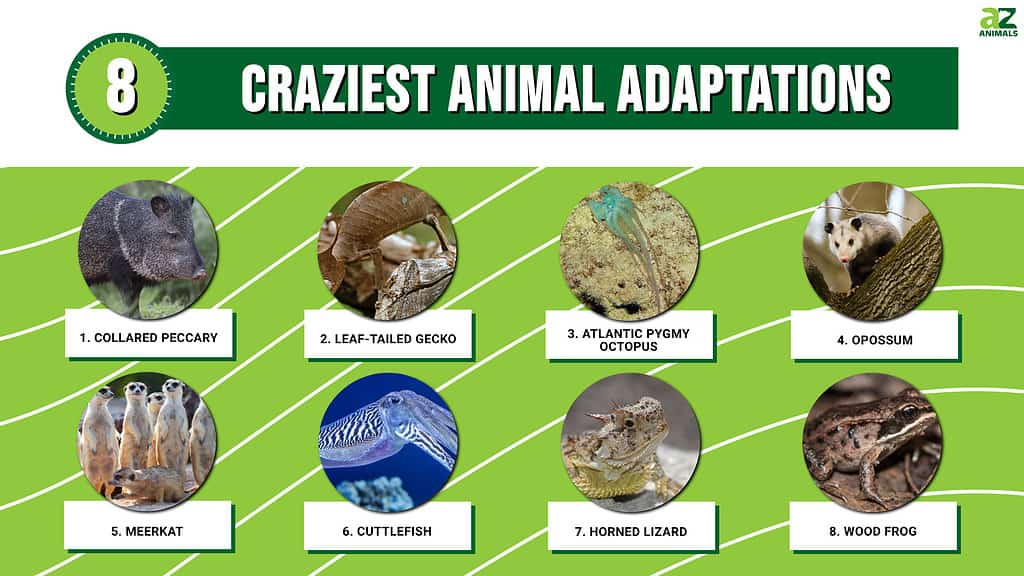
These adaptations occur over the course of numerous generations of each species. Each adaptation allows individuals to survive where others of their kind without that feature do not. These survivors are the ones that live to reproduce, passing the adaption along until all the members of that species have it. Humans impose the adaptations we like on our pets and livestock so they meet our needs and desires rather than what is best for the animal.
The animals that we have included have crazy adaptations for different reasons, some of which you might find very surprising. The types of animals with some of the craziest adaptations may come as a major surprise! Learn more about how some of these creatures made the list.
#8 Wood Frog — Even Lives North of the Arctic Circle
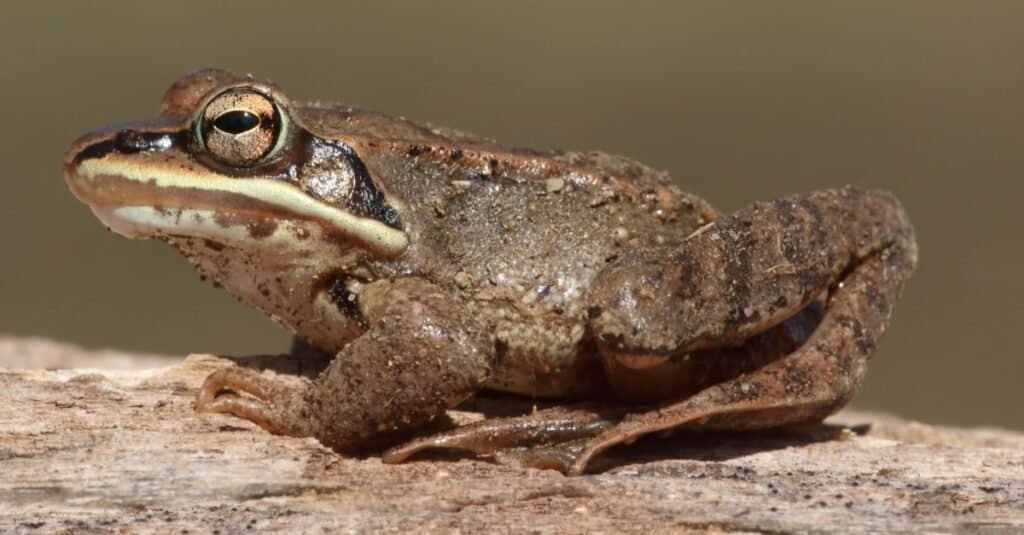
Glucose in the wood frog’s cells protects its body from damage caused by freezing.
©Steve Byland/Shutterstock.com
Size
0.28 ounces, 1.5 to 3 inches long
Habitat
Woodland areas and vernal pools
Diet
Carnivorous, consuming arachnids, insects, slugs, snails, and worms
Wood frogs (Lithobates sylvaticus) are a true marvel, able to survive winters in one of the world’s most frigid locations. These tree-dwelling frogs live range from Alabama to Alaska, where most of this species lives. Up to 60% of the amphibian’s body will freeze during the winter, allowing it to withstand winter lows of -80 degrees Fahrenheit. When spring arrives, the frogs thaw out and resume life as usual. The frogs are a species of IUCN Least Concern, as they are abundant throughout their natural range.
#7 Horned Lizard — Shoots Blood From Its Eyes When Threatened
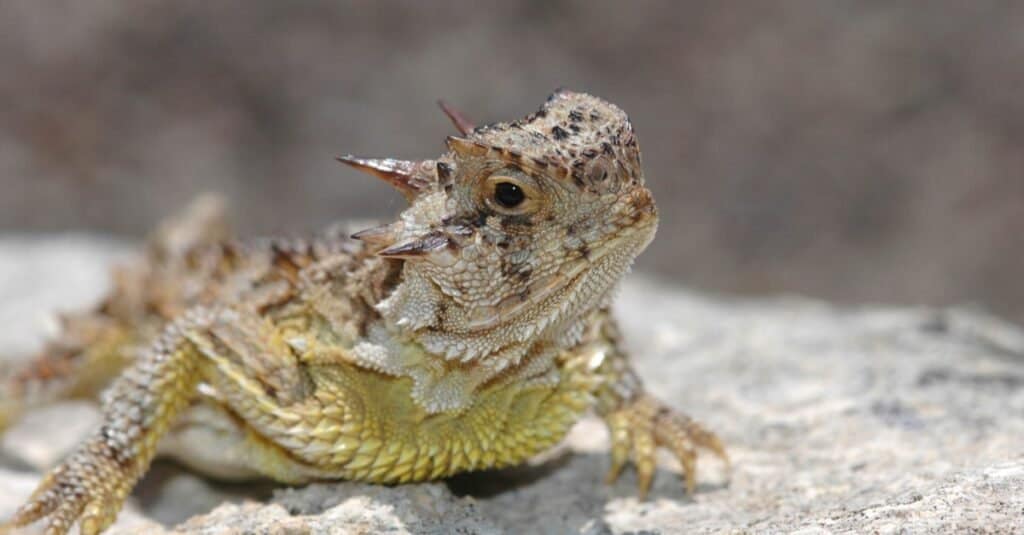
A Texas horned lizard’s horny appearance and coloration help it to blend into sparse vegetation.
©iStock.com/Shoemcfly
Size
25 to 90 grams, 3.75 inches high, and 3.75 inches long
Habitat
Desert and forest areas
Diet
Carnivorous, consumes ants, beetles, insects, and spiders
The horned lizard (Phrynosoma), also known as the horny toad, shoots blood from its eyes when confronted by predators. These lizards, sporting horns all over their bodies, ranging from Central America through much of the western United States and can withstand reasonably harsh conditions. The color of their scales helps them blend in with rocks, providing an extra layer of protection. Horned lizards’ IUCN conservation status has not been evaluated, however, they face issues relating to a loss of ant populations due to pesticides and overall habitat loss.
#6 Cuttlefish — Nature’s Ultimate Master of Disguise
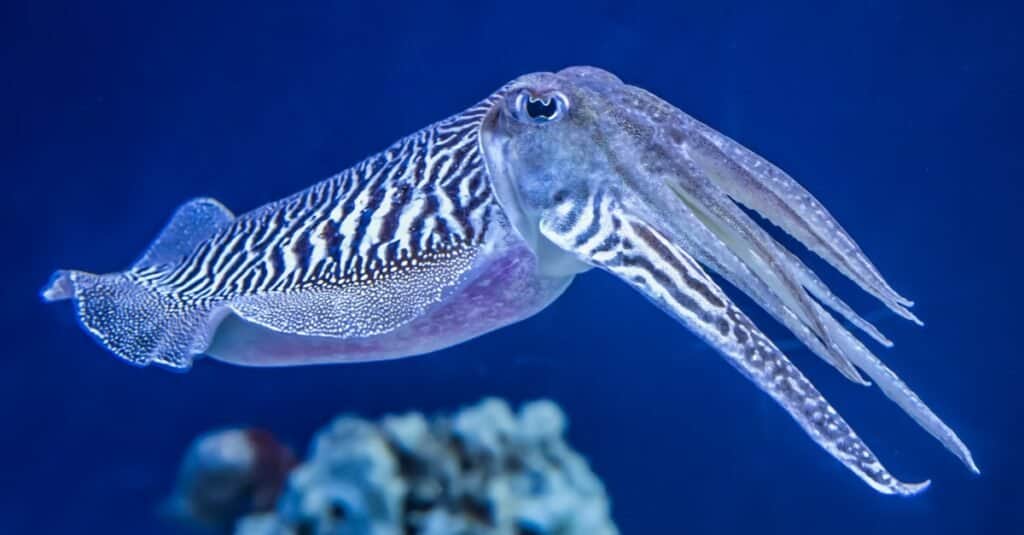
The common cuttlefish produces clouds of ink when it feels threatened.
©David A Litman/Shutterstock.com
Size
6.3 to 25 pounds, 5.9 to 20 inches long
Habitat
Coastal and deep ocean waters
Diet
Carnivorous and eats crabs, fish, and mollusks
The cuttlefish (Sepiida) is a cephalopod with the ability to change colors. This unique animal’s body is made up of millions of pigment cells that allow it to change its color and pattern. This process is unleashed whenever the cuttlefish moves its muscles, allowing it to transform when facing a predator threat. The creature is not only able to evade predators, but can also stun them by flashing its colors and squirting ink. Cuttlefish are IUCN-listed as Near Threatened, with habitat loss due to pollution, overfishing, and climate change possible factors.
#5 Meerkat — Can See in the Brightest Sunlight Because of Its Markings

Meerkats’ eyes have a clear protective membrane that shields them from dirt while digging.
©nattanan726/Shutterstock.com
Size
1.3 to 2.1 pounds, 10 to 14 inches long
Habitat
Semi-arid desert and scrub areas
Diet
Carnivorous and eats insects, lizards, and rodents
The meerkat (Suricata suricatta) boasts black markings lining its eyes that help provide extra protection by enabling better vision in strong sunlight. These creatures stand guard over the tunnels where their bands live. Because the markings help blot out excessive glare from the sun, they can see predators coming and bark to alert the others to their danger. This species has IUCN Least Concern status because of its high numbers in the wild.
#4 Opossum — Plays Dead Most Effectively

Opossums have no control over when or how long they play dead as it’s an involuntary reaction triggered by stress.
©Lisa Hagan/Shutterstock.com
Size
8.8 to 13.2 pounds, 2.5 feet long
Habitat
Woodland areas
Diet
Omnivorous, eating frogs, fruit, and insects
The opossum (Didelphis Virginiana) is a marsupial native to North America best known for playing dead very convincingly. Their ability to play dead makes many predators bypass them. In addition to being able to outwit predators by faking death, opossums may also be able to resist snake venom and are also unlikely to contract rabies because of their body temperature. Opossums are an IUCN species of Least Concern, with healthy populations.
#3 Atlantic Pygmy Octopus — A Master of Disguise
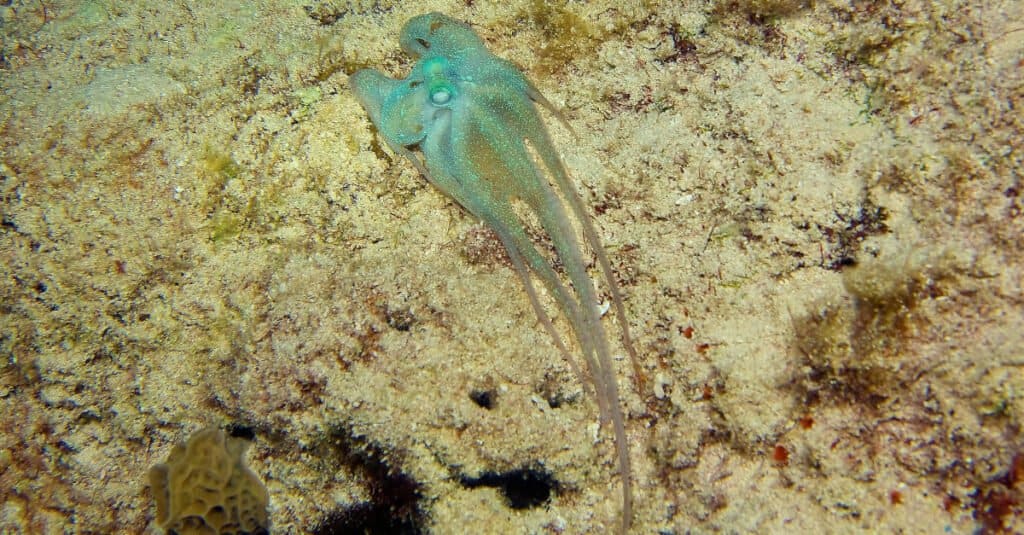
The camouflage abilities of the Atlantic pygmy octopus are extreme — they change colors to blend into their surroundings.
Size
Less than 4 inches long
Habitat
The Atlantic Ocean, particularly the Gulf of Mexico
Diet
Carnivorous and consumes crabs, fish, and scallops
The Atlantic pygmy octopus is one of 300 octopus species known to exist and can change its appearance to deter predators. One of the ways they can alter their appearance is to take on the appearance of a rock. In addition to changing color and appearance rapidly, the octopus’ high intelligence level allows it to find familiar, safe places again easily. Octopus species, in general, have IUCN Least Concern status.
#2 Leaf-Tailed Gecko — Can Camouflage Itself as a Leaf
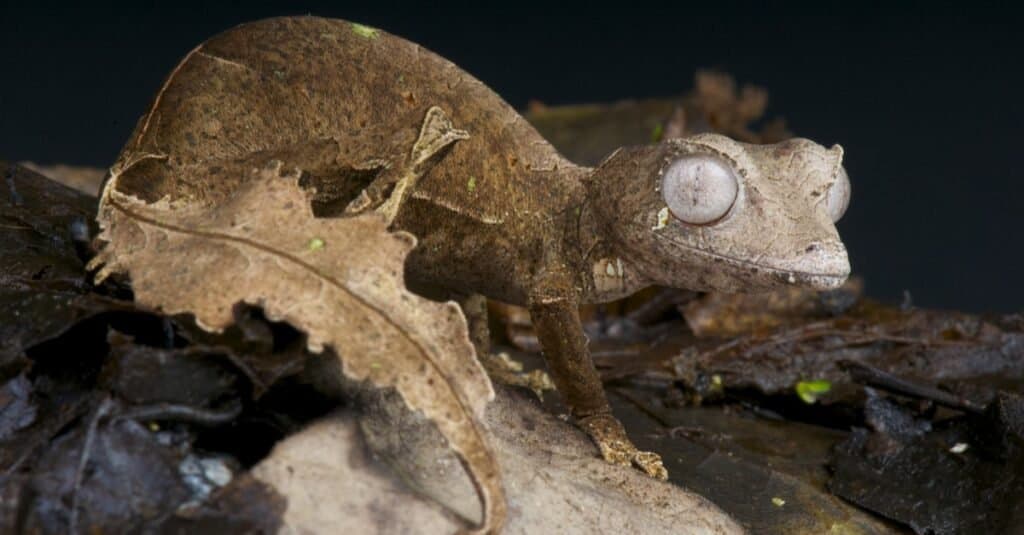
To avoid detection, leaf-tailed geckos will hang from branches, much like leaves.
©reptiles4all/Shutterstock.com
Size
4 to 12 inches long
Habitat
Trees in tropical rainforest areas
Diet
Carnivorous and eats flies, insects, snails, spiders, worms
The leaf-tailed gecko (Uroplatus fimbriatus) has a unique adaptation that allows it to easily survive in its native Madagascar, the only location where it exists in the wild. This lizard’s tail resembles a leaf, allowing it to easily blend in with the vegetation in the trees where it lives. Another advantage of the leaf-like appearance is being able to remain concealed when seeking prey. These lizards are Near Threatened because of human activity like deforestation.
#1 Collared Peccary — Easily Eats Through Cacti to Get Nourishment

The collared peccary’s diet is mostly based on plants, including prickly pears, berries, beans, tubers, and roots.
©Sinelev/Shutterstock.com
Size
Weighs 20 to 60 pounds
Habitat
Desert and tropical rainforest areas
Diet
Omnivorous and eats cacti, fruit, insects, and smaller lizards
The collared peccary (Pecari tajacu) is also known as a javelina or musk hog with an adaptation allowing it to easily consume cacti and succulents. This species’ strong jaws and large canines allow it to easily consume tough plant matter and a few smaller meat sources. Another way this animal has adapted to survive in its harsh environment is by having a three-chambered stomach that breaks down cacti and similar plant matter more easily. Collared peccaries are an IUCN species of Least Concern because of their large numbers and broad range.
Summary of the Top 8 Craziest Animal Adaptations
Here’s a recap of eight animals whose evolutions have included some of the world’s most interesting adaptations.
| Number | Animal | Adaptation |
|---|---|---|
| Blood-shooting eyes for self-defense | Collared Peccary | Easily digests tough plants like cacti and succulents |
| 2 | Leaf-Tailed Gecko | Uses leaf-like tail for camouflage |
| 3 | Atlantic Pygmy Octopus | Can disguise itself as a rock |
| 4 | Opossum | Plays dead convincingly |
| 5 | Meerkat | Dark eye markings help it see in bright sunlight |
| 6 | Cuttlefish | Can change and flash colors, shoots ink |
| 7 | Horned Lizard | Blood-shooting eyes for self defense |
| 8 | Wood Frog | Can allow up to 60% of its body to freeze to survive frigid temperatures |
The photo featured at the top of this post is © Mekan Photography/Shutterstock.com
Thank you for reading! Have some feedback for us? Contact the AZ Animals editorial team.







